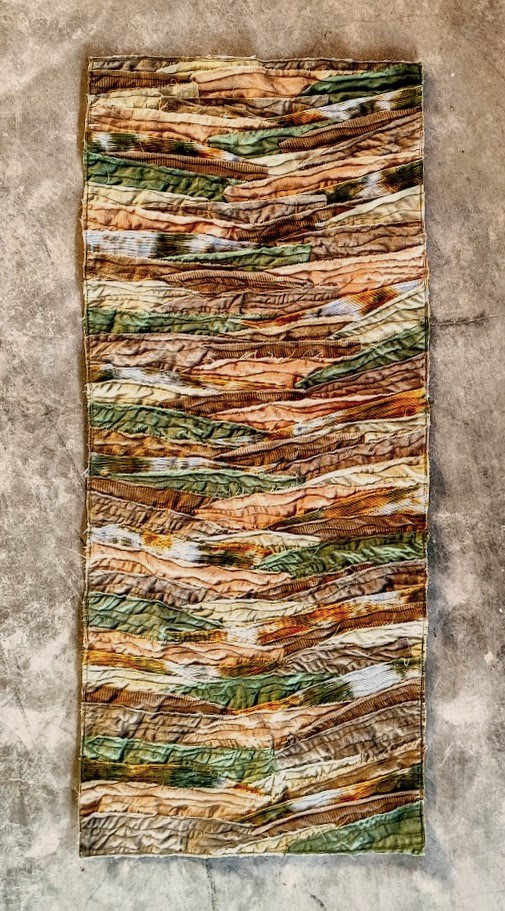Choosing Colors
- Sharon Prigan

- Nov 24, 2024
- 2 min read
Updated: Jul 9
I have spent the last year creating using camo colors. I have quite a few boxes with remnants from all the projects that I created during the year and have enough to create for another year using only camo colors.
People ask me how I create and how I end up choosing colors for a project. Well it is not one color it is many shades and tones and tints of a color family which create a world of color.
I "see" the colors but color theory to get an understanding of how to mix colors can be learnt.
In the color wheel there are primary, secondary and tertiary colors.
Primary colors are red, yellow and blue, they are pure colors and cannot be made by mixing other colors together.

Mixing 2 primary colors together create secondary colors, orange, green and purple.

And when we mix primary colors with adjacent secondary colors we create tertiary colors. They have both names of their parent colors, blue-green, yellow-orange with the primary color first.

And when we mix more adjacent colors we get even more options

And then in color theory there are definitions
Pure color - A color unmixed with other colors red, blue and yellow
Shades - Pure colors mixed with black
Tints - Pure colors mixed with white
Tones - Pure colors mixed with grey - adding grey flattens the color
Hue - Another word for color - the dominant color in the mix - red, yellow or blue
Value - Dark or Light - how dark or light a color appears
Saturation - Bright or Muted - which refers to the intensity or depth of a color
Temperature - Warm or Cool - refers to the energy of a color
A progression of camo green colors from light to dark

A progression of camo yellow colors from light to dark

Adding greys, whites and blacks to a color give different tints, tones and shades

When choosing threads from my vintage and remnants supply, I apply the same theory and find many shades in the camo family


I also look at nature when working with colors and see what works together
greens, yellows, browns and greys in all their many tones and shades.


When I work with one color, or as I should say, a color family, I incorporate all the hues, shades and tints of that color.
I end up with a very versatile mix of one color family

Taking remnants from those projects and creating this Wave Nova Star art quilt.

And there are now remnants in different sizes from this for the next project.
To find more art quilt tutorials see here on Etsy
and here on the site










